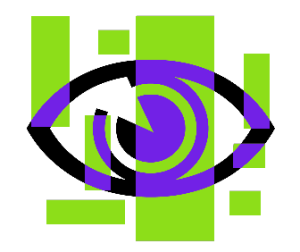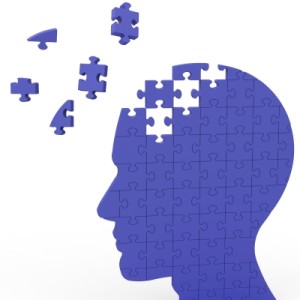
- Attention is the key
Attention is a cornerstone of successful UI/UX design. Your main goal while creating a successful UX design is to capture and keep the attention of users. Whether we want it or not – we pay attention to anything that stands out, anything that is innovative and unusual. You can use this fact to draw visitor’s attention to the most important information on your website – you have a vast row of tactics to do so: vivid colors, bold font, sounds, blinking and so much more. Remember that if you use the same attention-grabbing techniques in several places of your website – users’ attention will shift and none of the items will get full, undivided attention you would like it to get from a visitor to fully grasp the concept.
- Visual aspect
It’s quite understandable that you want customers to see as much info about your business/company as possible. Nevertheless, it’s very hard for us to concentrate on something, when we are presented with large pieces of information. Therefore, it is extremely important to group your information in sections. For example, you can use the same color for two pieces information that are somehow related. People will perceive them as two items that “go together”. Yet, there are colorblind people, so you need to make sure that you also use some other technique to indicate that they belong to the same “group”.
You should also avoid using decorative fonts because they are difficult to read and customers quickly lose interest. Another important detail that has to be taken into account, while designing a successful website design with positive UX is, certainly, the color palette that you are going to use. There are canons that you have to consider, while creating the design. For instance, the hardest colors to read are red and blue, so you don’t want to place blue text on red background or vice versa. Besides, objects look much better when they are a little bit tilted.
- We like to accomplish things with minimal amount of work done
Your design must include defaults that allow people make a lot less work. If you cram a lot of information on your main page, people might not want to look through it – “too long, didn’t read” principle is at work here. Instead, you can just provide short descriptions with the options to find out more if customer wants to. Besides, the basic information and features must also be introduced after a thorough analysis of users’ preferences. You can’t just think what people like and base your design on that. Every person is unique, but fortunately, the majority of us have similar general preferences. It’s also worth to mention that examples sometimes work better than short descriptions, especially if you’re designing a website for a business that deals with visual products and art. Buttons that are clickable on your website must look the part, same goes for other elements. You need to make them as obvious as possible.
- We all have our limits
It’s not a secret that when people see a text block that is too long, they often lose interest half way through it. Therefore, you need to learn about progressive disclosure. Progressive disclosure is a way of presenting the information from the core to superficial elements. Basically it means that users get to see the essence of the description right away and if they are interested they can click “read more” and Find out more details on the matter, which are interesting, yet aren’t essential. Appropriate position of the information on your website can also mean a lot – if it’s easy to quickly look through – there is a higher chance that your visitors will stay longer and convert, as the experience on your website will be pleasant for them. In order to make your information easier for perception, use headlines and short blocks of text.
- Our memory is constantly changing
Person’s perception and memory of a certain event or experience changes, depending on his emotional state. Therefore, it is safe to say that memory is very subjective and cannot be perceived as an absolute truth. Some of it may very well be true, however it is much better to use the results of human behavior studies than believe everything that users say. How is it relevant in term of website design? Well, even though the majority of people will consider themselves capable to remember the info from previous page of your website in order to accomplish the task on the next one – they won’t. Knowing that, you can adjust your website, so that the task info is on the same page with the field for its execution. Many of us believe that we can remember around 7 things, but in compliance with research, we can keep in mind only 3-4 items.
- We are all prone to mistakes
You can be 100% sure that visitors of your website will make mistakes. This is what makes us human. We simply cannot excel in everything like machines. Besides, it’s safe to assume that in the majority cases your visitors will have various educational background, which is why it is extremely important to help them prevent mistakes, before they occur. In case some of the actions are complicated and you can anticipate that the mistakes, committed by users at this point, can cause serious inconveniences, you can simply introduce additional confirmation request after the end users presses the button, which finalizes the action. Such sections must also have easily accessible “undo” button, so that a person has a chance to correct his/her mistake.
- Information excites us
We are curious by nature and like to find out more information. It’s like a drug for us, just like tasty food or sex. Oftentimes we think that we need more and more information even though we cannot process it. It creates an impression that we have more choices and are in control. Controlling situation makes it easier to endure and persevere in dire circumstances, which is why we feel ourselves better equipped for anything if we possess vast knowledge. Although we cannot understand the processes behind the work of the computer, we need to know what is going on.
- Our subconscious mind is working unbeknownst to us

Apart from that, people are heavily affected by pictures and most frequently used words. For example, young people, who see the pictures of elderly citizens and read “retirement”, “tired” and “Florida” start walking slower. This happens because our brain involuntary tries to connect and associate itself with other people, whom we see in the pictures and whom we are reading about. In fact it’s an amazing opportunity to exploit, making people focus on the words and feelings that will help you to promote your products/services.
- We operate by creating mental models
We all have a strong notion of what we do with objects that surround us or our daily tasks (read a journal or book, pay the bill, turn off/on the light and so on). These notions, known as mental models, play a great role in how we perceive things on a website. Therefore, it is crucial to learn about the most common mental models of users in order to create a pleasant user experience. To learn more about that you can accomplish user research that will help you greatly in outlining the most useful features that need to be introduced in your design.
Another option is to teach users a new model. Although it’s a more complicated task, it can pay off really nice, as we cannot overlook the fact that people tend to like everything innovative and unusual. For instance, you can use the reference to a previously known mental model “it’s like riding a bicycle”.
- We like to communicate
As John Donne once said: “No man is an island”. People have a constant urge to communicate and this desire to exchange thoughts or words is transferred to technology as well. Communication is used to request guidance, which is currently reflected in the ratings and reviews. This need for guidance has a psychological term and is known as social validation.
Any action that people accomplish together, bonds them and not just in a metaphorical way – they actually have chemical reactions going on in their brain. For example, when people laugh, looking at each other, they experience pleasure and bond quicker than if they were simply conversing.
Another form of such communication is favor. If a person does a favor for you, you will inevitably feel yourself indebted to him. This principle can be easily exploited in the UX design. For example, if you provide something that user wants and then ask him to fill out the form, he will be much more inclined to do that. However, in case you ask him to fill out the form first, he might not take the trouble to do so.






